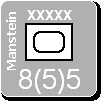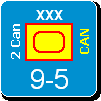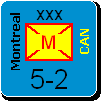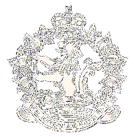Shannon V. OKeets
Posts: 22095
Joined: 5/19/2005
From: Honolulu, Hawaii
Status: offline

|
quote:
ORIGINAL: Froonp
OK, I was not shred to pieces by posting my take at 3.4.3, so here is my take at 3.4.2.
3.4.2 Action Choice
Patrice Forno – Version 1.0
Action Types
Action choices are the heart of the game system of MWiF. I think that your overall action choice during the game will give you victory or defeat. You will have about 125-126 impulse per side for the whole 39-45 game (which make it a global average of 3,5 impulses per side per turn over the course of the 36 turns of the whole 39-45 game), so that’s about 120-130 action choices you will have to do.
There are 5 types of actions that you can choose during each impulse.
• Land action gives you some air missions (from 1 to 4), unlimited land moves and land attacks and no naval move.
• Naval action gives you some air missions (from 1 to 3), no land move and land attacks and unlimited naval moves.
• Combined action gives you a large number of air missions (from 3 to 7, China excepted), some land moves (2-6), few land attacks (1-3) and few naval move (1-3). It is a bit of everything.
• Air action gives you unlimited number of air missions, no land move and land attacks, no naval move.
• Pass action gives you no air missions, no land move and land attacks and no naval moves.
Action choice also has an important impact on reorganization. Reorganization is cheaper for units that match the action type. For example, it costs the normal amount for air units if you choose an air action, otherwise it is twice the normal cost.
The action types the most chosen usually in the game are the land, naval and combined actions. The air action is very infrequently used, and the pass action is only used when you would like the turn to end (by the allies in the first half of the war, and by the axis in the late part of the war). Basically you do nothing military, and the turn has more chances to finish. My WiFZen for this action is that your country is conducting actions that are not represented and have no effect on the game. Maybe they are secret (or not) meetings, secret (or not) negotiations, whatever. Generally the land powers (Germany, USSR) use a lot of land actions, some combined actions, a few naval actions and a few air actions. IMO they only use air action as an opening for a large scale offensive, or when they have nothing to do and want to rebase a lot of planes. The naval powers (USA, CW, and Japan) generally use 1 naval impulse per turn, and a lot of combined actions in the game. Land actions and air actions are fewer.
Scheduling
You need to think about your action choices wisely and have a vague idea of the types of actions that you will need during the whole turn (they depend on your grand strategy), and schedule them for the better result, taking into account the expected number of impulses for that turn, the present weather and also the weather forecast. The weather forecast is indicated by the modifier to the weather dice, and can also be known in advance using intelligence. The expected number of impulses per turn is given in following chapters.
Example : If you want to conduct a large scale summer offensive, it might be a good idea to start the game turn by an air action, so that you can use your air force widely and without restrictions, so that the enemy is softened for future impulses. It might look like a wasted impulse because there will be no land action or land attack, but it may pay off during next impulse, providing you’ve restricted the enemy’s reorganization capacity so that he does not nullify your results. On the plus side, an air action let you reorganize using your full reorganization capacity.
Example : If you are playing a naval power (USA, CW or Japan), you will be obliged to choose one naval action almost every turn. This will be either to cover your convoys routes (CW & USA), or to carry on your offensives across the oceans, or to defend against the probes and offensives of your enemies. For the CW it is generally chosen as the first impulse to ensure the best convoy protection for all the turn, but it may be delayed depending on the weather, or never be done under exceptional circumstances. So as you know you must do it, schedule your other naval needs so they happen during that impulse.
Dispersion
One thing that is easy to have wrong with action choices is to choose a combined action too often. You need to realize that you will do fewer things by choosing 3 combined actions in a row, versus choosing one of the main arms’ actions in each of the 3 impulses. For me, combined actions are dispersion of military power for mediocre results. Specialized action choices (air, naval and land) are concentration of military power for the best results.
For example, with the CW, 3 combined actions give you 6 naval moves, 15 air missions, 9 land moves, 3 land attacks and 3 rail moves. If you had done 1 naval, 1 air and 1 land actions, you’ll have had an unlimited number of naval moves, an unlimited number of air missions, an unlimited number of land moves, an unlimited number of land attacks and 6 rail moves (rail moves are limited whatever your action choice).
The difference is timing and scheduling. You will choose a combined action if you think that you can’t wait for a future land action to move land units, that you need to move them now, or that you can’t wait for a future air action to move air units, etc…
But when choosing a combined action you should always ask yourself : “Do I really need to move all these different arms’ units at the same time ?, Can’t some of them wait for next impulse ?”. Unavoidably, you’ll choose combined actions a lot, the main good reason for that choice is for having a lot of Air Missions in the first place, because except for the air action, the combined action is the one with the most air missions, and you do a lot of air missions in MWiF.
Offensive Chits
You can have super versions of the regular action choices by having an offensive chit expended.
A Land offensive chit allows you to fight 1-3 land battles at much higher odds than you would normally have had.
An Air offensive chit allows you to bomb a whole area of the frontline (4-8 hexes across) with a much higher efficiency than you would have had. Obviously, you need to have a fighter force that make your bombers clear through, because air-to-air combats are not affected by air offensive chits.
A combined offensive chit allows you to have unlimited air, land and naval actions. You can do everything at the same time.
A naval offensive chit, depending on the option you choose, allows for better efficiency at sea. The old version allows you to reorg a lot of ships to use them again. The newer version allows you better search rolls in a few sea areas.
Also, and maybe most importantly, offensive chits allows for cheaper (halved) reorganisation costs for units reorganized by the offensive chit HQ. So the offensive chit allows for a big blow, and then allows you to use most of the disrupted units later again.
Offensive chits are few in the game. Germany begins the game with 2 of them, Japan with one. Germany is likely to build a couple (1-3) more during the course of the war, while Japan usually only builds 1 more but not much due to smaller production. The USSR begins the game with 1 too, and is the only country on the allied side to have one. The USSR can generally have about 1-2 offensive chits per turn during 1-2 turns per year from 1942 to the end. The CW generally manage at having 2 offensive chits per year from 1942 to the end of the war, maybe less in 1942 (only 1 for the year) and slightly more in 1944-1945. The USA usually will have a huge lot of them in 1943-1945, increasing year after year. It is not uncommon to have the USA use 1 offensive chit per impulse for each impulse of the M/J and J/A 1945 turns. It is not uncommon to have them have 2 offensive chits per turn in M/J and J/A of 1944, and maybe 1-2 spare for S/O and N/D 1944. The power of the USA comes a lot from the Offensive Chits that they are able to field, contrarily to the other countries. The USA army is not very strong, nor very numerous, it is numerous and armoured enough to stand the enemy, but the offensive chits gives them what they lack to crack the Axis lines.
Teaming
When choosing action types, you need to know how to work as a team with other major powers on your side. The major powers known to be able to do that are : The Western Allies (the CW, the USA and Free France for a little part) famous for their Super Air / Super Land sledgehammer, but also for normal action choice combinations, and the Euro Axis (Italy & Germany). This teaming works better if both Major powers cooperate.
Euro Axis. Germany is a strong land power, and a moderate sea power. Italy is quite a good sea power, and a mediocre land power. One good scheme for running a good Battle of the Atlantic with the Euro Axis, is to have Germany sails its SUBs early in the turn (either with a naval action, or with a combined action as all SUBs leaving the same port count as only 1 naval move even if they sail into dozens of different sea areas) while Italy does something else, initiate its own searches and fight any naval battle. And then during the following impulse Italy chooses either a combined or a naval action to move its SUBs so that they join with the German ones, and do their searches. The German SUBs will participate in each naval battle thus started along with the Italian SUBs. Italy will do that each subsequent impulse and initiate new searches and fight new combats alongside with the Germans. Germany will be able focus on land wars in distant lands while Italy initiates the searches in the Atlantic and helps the U-boots wrecking havoc.
CW & USA (Western Allies) : The USA are a sub-strong land power, a very very strong naval and air power. The CW are a moderate land power, a very very strong naval and air power. One good teaming that they can setup is for example to have one of them choose a naval action while the other chooses a land action. This allow for all the fleets of the former to move, load the land units of the later, and then have all the land units of the later able to unload, invade, move, attack, without limit. This team can (and must) be backed up from the mid game to the end by the Free French that will be able either to choose a naval, or a land or an air action, what will be the most convenient for the other members of the team.
Another teaming action that both the Euro Axis and the Western Allies can use is for one member of the team to choose an air action while the other chooses a land action. This allows for unlimited air strikes on the enemy (plus lots of reorganisation for future air use), plus unlimited land moves and land combats (and lots of reorg of land units too). It looks like a big combined action from the team. This is generally most often seen with the Western Allies, who can also use it in its Super version, which is an offensive chit on an air action for one member of the team and an offensive chit for a land action for the other member. This later combination is ultimately powerful and can crack the most powerful German defence, especially if the Western Allies dominate the skies.
Disturb the enemy’s plans
You must try to force the enemy to choose an action choice that he would not have wanted to choose at this moment. As I already said somewhere, MWiF is a game against the clock, more than against the other side, so making the enemy waste precious impulses doing something else than what really bother you is good.
For example, try force the German to choose a combined or naval or air action when he is trying to conduct a land war in Russia. This will give Russia a delay, which can help save her. This is not easy to achieve.
Another example is as the Axis to force the Western Allies to choose a naval action when they would have been able to choose a combined action. Choosing a naval instead may make them late in their planned land action. It is easy to achieve, just sink a few more convoys than what they were ready to loose for example.
Initiative and flip-flops
In MWiF, a side is not required / guarantied to play the same number of impulses as the other side per turn. At least half of the time (more or less a few percents), one side will have one more impulse than the enemy. It will play the first impulse, and the last. If that happens on two subsequent turns, this is called (in French) a flip-flop, and this is a very powerful effect as you can act twice in a row without your opponent reacting. This is especially powerful, as reinforcements will have arrived in between the 2 turns maybe giving you (or the enemy) an extra power. Flip-flops have small chances of happening, as the game has a mechanic that helps the side that did not move first in a turn, to move first in the subsequent turn (this mechanic is the initiative track).
So, beside action choices, choosing who plays first is important. As I have already said, playing first also gives chances for an extra impulse (about 50% chances). But also, the more you play second in a series of turn, the more chances you’ll have to play first in a given turn you chose in advance. For example, the Germans that chose a Barbarossa 41 strategy like to play first in M/J and J/A 41. To have the best chances of this happening, they would better let the Allies play first for the 1-3 previous turns. Playing first have a tendency to push the initiative toward the other side – initiative track – so when and when the initiative is pushed in one camp, this camp have more chances to win the initiative roll, and the side that wins the initiative roll decide who plays first. So, it is usual to have a side winning the initiative roll, and have the other side play first, as a mean to play first later, when the turn will be best for their war plans to be executed.
Gambles
The more impulses you play during a turn, the more chances this turn have to end. See the statistics at the end of this chapter for information about the expected number of impulses per turn.
When it is late in the turn, you can try a gamble. A gamble here is betting that the turn will end to try actions that you would not have tried at another moment, or actions that would be less damaging at another moment.
It can happen in Russia for example that a city is besieged by 2-3 hexsides by the enemy. A dangerous gamble for the defender is to have one of the city’s defending units to move out of the city, hoping for the turn to end and a reinforcing unit to take its place. The risk is that if the turn does not end, the city may be easier for the enemy to conquer. The less this city is threatened, the less dangerous this gamble is. The interest is to have a quick reinforcement, which may be the difference between life & death for that city.
Another gamble, that has no risks in itself but is not doable all the time because often the units able to do it are already disrupted, is to attack the enemy convoy lines late in the turn, hoping for the turn to end so that the enemy has no opportunity to send reinforcing convoys to re-establish his supply and production lines. One more dangerous version of this gamble is to not attack the convoys in some sea area for the whole turn, hopping that the enemy will not go reinforcing them, and attack them late in the turn.
Another gamble would be for units to advance to areas where they are out of supply during this bad weather turn, hoping that the turn ends so that the enemy does not counter attack them, and be in supply next turn to advance even deeper.
Also, you’ll often see German (or Russian) units advance in the difficult terrain of the Pripet Marshes (that makes them disrupt and be immobilized for the rest of the turn) when the end of the turn is nearing, because they hope for the turn to end and so they think that their units would not have advanced anymore anyway.
Obviously, the end of the turn is also the moment for “desperate attacks” (ones that have high risks of disruption), that you would not have done earlier because you would not have liked to have your units disrupted for whatever reason.
Statistics about numbers of impulses
Here are my own statistics, accumulated over 8 completed 39-45 games. This is 48 J/F game turns, 48 M/A game turns, and so on.
Average number of impulse per side, per game turn :
J/F : 2,5 impulses per side per turn
M/A : 2,9 impulses per side per turn
M/J : 4,2 impulses per side per turn
J/A : 4,7 impulses per side per turn
S/O : 3,5 impulses per side per turn
N/D : 2,9 impulses per side per turn
For an average of 125-126 impulse per side per whole 39-45 game (which make it a global average of 3,5 impulses per side per turn over the course of the 36 turns of the whole 39-45 game).
Maximum observed number of impulse for a side during a game turn :
J/F : 4 impulses for a side
M/A : 4-5 impulses for a side
M/J : 6-7 impulses for a side
J/A : 7-8 impulses for a side
S/O : 5 impulses for a side
N/D : 2 impulses for a side
Minimum observed number of impulse for a side during a game turn :
J/F : 1 impulse for a side
M/A : 1 impulse for a side
M/J : 1-2 impulses for a side
J/A : 2-3 impulses for a side
S/O : 1-2 impulses for a side
N/D : 1 impulse for a side
To sum up, a J/A game turn will have an average of 4,7 impulses (say 5 for the side that plays first, and 4 for the other side), and have a maximum of 8 impulses, and a minimum of 2 impulses.
Let’s be clear that :
• The minimum and maximum are sometimes one time occurrences over the whole 8 games.
• The minimum observed number of impulse is for the side that moved last. The other side will have experienced an extra impulse generally.
• The maximum observed number of impulse is for the side that moved first. The other side will have experienced an impulse less generally.
Statistic about the expected number of impulse per game turn
Some other statistic that I had from another source, obtained after simulating 100,000 years of WiF game turns :
Probability of turn ending after impulse J/F M/A M/J J/A S/O N/D
3 5,60% 2,50% 0,10% 2,60%
4 23,40% 11,80% <0,1% <0,1% 3,70% 12,70%
5 32,80% 24,90% 3,50% 0,50% 13,40% 24,50%
6 24,30% 27,10% 7,80% 0,80% 20,60% 25,10%
7 9,90% 18,80% 16,50% 10,80% 22,60% 18,10%
8 3,00% 9,90% 20,90% 18,30% 18,50% 10,30%
9 0,70% 3,50% 20,00% 21,10% 11,70% 4,50%
10 0,20% 1,20% 15,10% 19,70% 5,80% 1,60%
11 <0,1% 0,30% 9,30% 14,60% 2,50% 0,50%
12 <0,1% <0,1% 4,70% 8,50% 0,90% 0,10%
13 1,50% 3,90% 0,20% <0,1%
14 0,50% 1,40% <0,1%
15 <0,1% 0,30%
16+ <0,1%
Expected # of impulses: 5,2 6,0 8,7 9,5 7,2 6,0
Probability of odd number of impulses 49,10% 50,10% 50,90% 51,20% 50,50% 50,20%
Probability of even number of impulses 50,90% 49,90% 49,10% 48,80% 49,50% 49,80%
Ppatrice,
Could you please send me a TXT file of this? That is easier for me to integrate into my existing file.
_____________________________
Steve
Perfection is an elusive goal.
|
 Printable Version
Printable Version






 ).
). 




 New Messages
New Messages No New Messages
No New Messages Hot Topic w/ New Messages
Hot Topic w/ New Messages Hot Topic w/o New Messages
Hot Topic w/o New Messages Locked w/ New Messages
Locked w/ New Messages Locked w/o New Messages
Locked w/o New Messages Post New Thread
Post New Thread